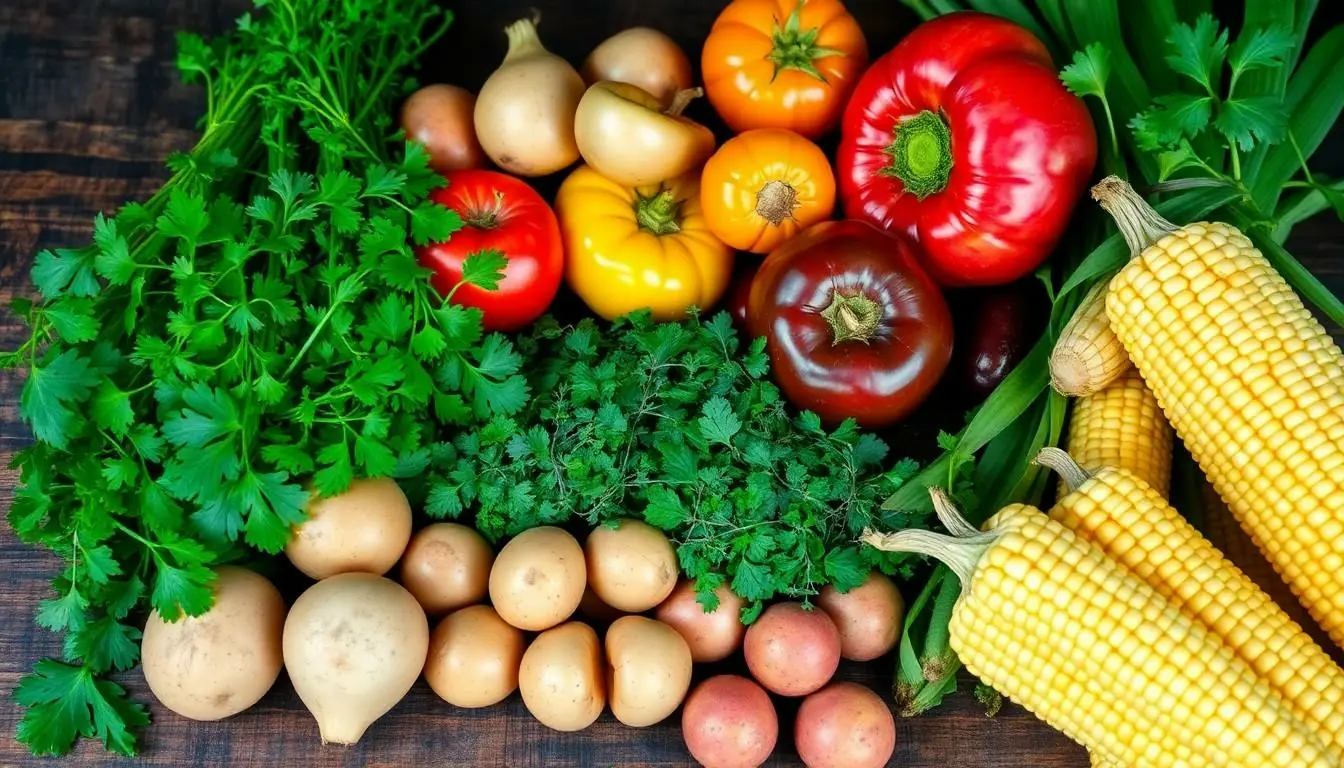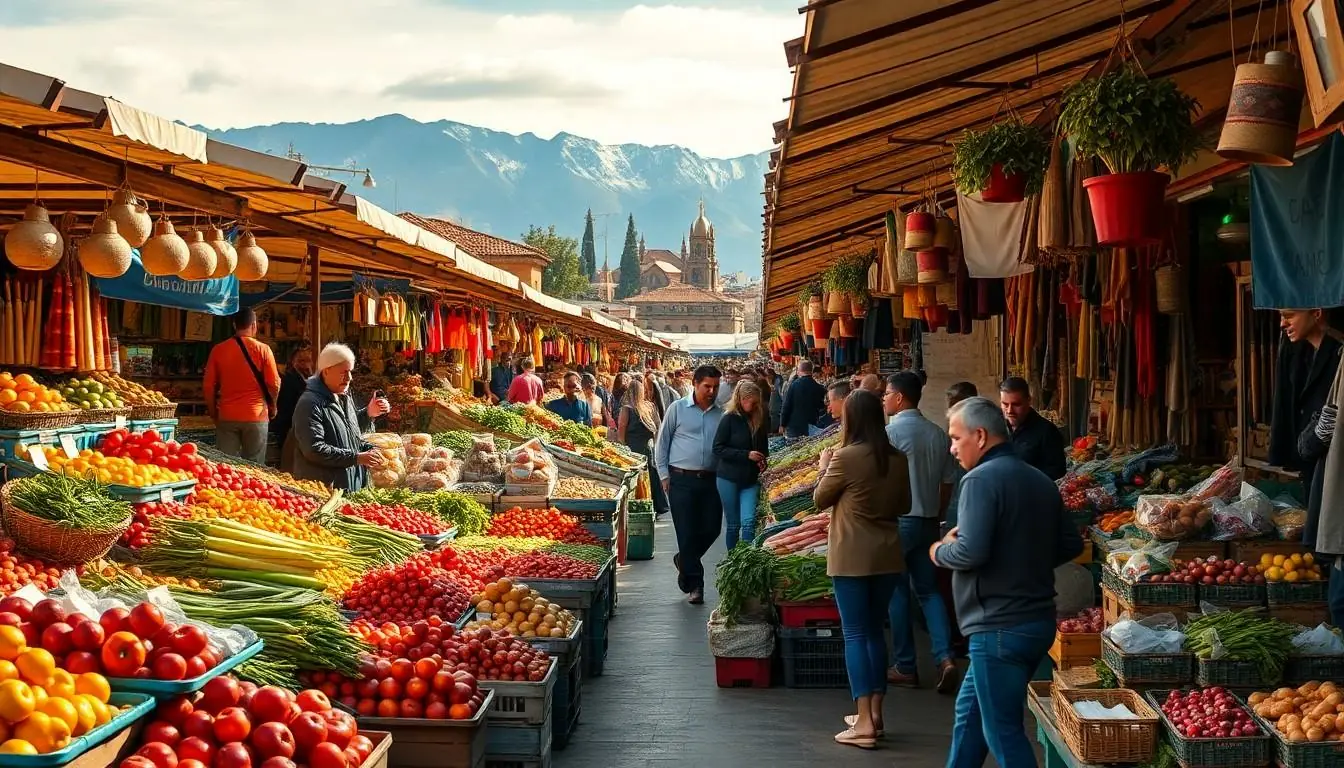When it comes to food that warms the soul and tickles the taste buds, Chilean cuisine takes the crown. From the vibrant markets of Santiago to the rustic kitchens of Patagonia, Chilean dishes are a delightful blend of flavors that can make anyone’s mouth water. If you think you’ve tasted it all, wait until you dive into the world of Chilean recipes—they’ll have you saying “¡Más, por favor!” faster than you can say “empanada!”
Table of Contents
ToggleOverview of Chile Food Recipes
Chilean food showcases a rich fusion of indigenous ingredients and European influences. Traditional recipes often highlight seafood due to the country’s extensive coastline. Ingredients like empanadas, pastel de choclo, and cazuela form the backbone of Chilean cuisine.
Empanadas filled with meats, cheese, or seafood reflect local flavors and are popular for both casual dining and celebrations. Pastel de choclo combines ground corn with meat, olives, and hard-boiled eggs, creating a hearty dish suited for families.
Cazuela features a comforting broth that includes chicken and seasonal vegetables, representing the home-cooked essence of many Chilean households. For dessert, apples, nuts, and sweet pastries like alfajores play a crucial role, satisfying any sweet tooth.
Unique regional specialties abound, from the north’s spicy dishes to the southern emphasis on stews and comfort foods. Influences from Mapuche traditions contribute to the variety of flavors and textures found in Chilean recipes.
Cooking methods vary widely, including grilling, baking, and steaming, allowing for diverse meal preparations. Seasonal ingredients remain important, focusing on freshness and local availability. Each dish tells a story of the land and culture it originates from, making Chilean cuisine a vibrant tapestry to explore.
Chilean food recipes invite anyone interested in cooking to experiment with bold flavors and hearty ingredients. Enthusiasts find that preparing these recipes not only satisfies culinary curiosity but also offers a taste of Chile’s rich history and cultural diversity.
Popular Ingredients in Chilean Cuisine

Chilean cuisine features a variety of distinct ingredients that contribute to its unique flavors. These ingredients reflect the fusion of indigenous and European culinary traditions.
Fresh Herbs and Spices
Fresh herbs and spices play a pivotal role in Chilean cooking. Cilantro adds a fresh, zesty dimension to many dishes. Oregano enhances the flavor of meats and stews. Merken, a smoked chili powder, brings warmth and depth, common in various regional recipes. Additionally, bay leaves infuse broths and soups with aromatic notes. Each herb and spice elevates the dish, creating rich, flavorful combinations that define Chilean cuisine.
Common Vegetables and Grains
Common vegetables and grains constitute the foundation of many Chilean meals. Potatoes, prevalent in countless varieties, serve as a staple ingredient in many dishes. Corn also holds significance, especially in preparations like pastel de choclo. Beans provide fiber and heartiness, often featured in stews and salads. Seasonal vegetables, such as tomatoes and peppers, enhance freshness and nutritional value. Each ingredient reflects the diverse agricultural landscape of Chile, ensuring a vibrant culinary experience.
Traditional Chile Food Recipes
Chilean cuisine offers a variety of traditional recipes that showcase its rich flavors and cultural heritage. Empanadas and pastel de choclo stand out as beloved dishes that reflect the heart of this vibrant culinary landscape.
Empanadas
Empanadas serve as a quintessential snack or meal throughout Chile. Typically, these pastries are filled with ingredients like beef, chicken, cheese, or seafood. They’re often seasoned with herbs and spices, ensuring a burst of flavor in every bite. Most Chileans enjoy empanadas during festivals or family gatherings, making them a social food that brings people together. The dough, made from wheat flour, is lightly golden when baked or fried, adding a delightful crunch. Varying across regions, some empanadas include unique local ingredients, allowing each variation to tell a different story of Chilean culture.
Pastel de Choclo
Pastel de choclo represents a hearty and comforting meal found in many Chilean homes. This dish features a base of ground meat combined with ingredients like olives, hard-boiled eggs, and spices, creating a robust flavor profile. Corn, essential to the dish, is blended into a creamy topping that adds sweetness and texture. Often baked until golden-brown, pastel de choclo captivates diners with its inviting aroma. The combination of ingredients reflects Chile’s agricultural richness, highlighting local produce that enhances the dish’s appeal. Families often serve it during gatherings, ensuring this culinary classic remains a cherished part of domestic life.
Modern Twists on Chile Food Recipes
Chilean cuisine evolves with modern twists incorporating global flavors and techniques. These interpretations highlight traditional ingredients while catering to diverse dietary preferences.
Fusion Dishes
Fusion dishes creatively blend Chilean classics with international flavors. Tacos, for instance, filled with spicy seafood and topped with aji verde, showcase culinary innovation. Sandwiches made with pan de marraquetas and filled with Korean BBQ meat reflect a delicious cultural interchange. Grilled empanadas featuring pizza-inspired fillings, like mozzarella and pepperoni, cater to varied palates. These unique combinations encapsulate Chile’s vibrant culinary landscape, merging traditional elements with contemporary tastes. By exploring fusion, chefs enhance the overall dining experience and present Chilean cuisine in an exciting light.
Vegetarian and Vegan Options
Vegetarian and vegan options now feature prominently in Chilean cooking. Traditional dishes easily adapt to plant-based diets without sacrificing flavor. Lentil cazuela, for example, replaces meat with hearty lentils while maintaining its comforting essence. Empanadas filled with mushrooms and vegetables celebrate local produce, offering delightful flavors. Salads featuring quinoa and seasonal vegetables provide refreshing options. Recognition of sustainability has encouraged the inclusion of more plant-based ingredients in Chilean cuisine. Chefs prioritize fresh herbs and spices to ensure dishes are both nutritious and appealing, appealing to a broader audience.
Tips for Cooking Chilean Dishes
Embrace fresh ingredients when preparing Chilean recipes. Local produce, seafood, and meats boost flavor and authenticity. Use herbs like cilantro, oregano, and merken to enhance dishes, as these traditional seasonings define Chilean flavors.
Start with a solid base for soups and stews. Cazuela, for instance, benefits from a well-crafted broth. Incorporate seasonal vegetables to ensure meals reflect the richness of Chile’s agricultural landscape.
Experiment with variations of classic dishes. For example, empanadas can feature different fillings, such as cheese, seafood, or mushrooms. A focus on adapting recipes to personal taste invites creativity in the kitchen.
Utilize traditional cooking methods. Techniques such as baking, grilling, or steaming retain the essence of Chilean cuisine, allowing for a spectrum of flavors. Adapt recipes with modern twists, merging classic preparations with contemporary influences.
Balance flavors and textures. Each dish tells a vivid story, from the crunch of baked empanadas to the comforting warmth of pastel de choclo. Combining contrasting textures can enhance the overall dining experience.
Practice patience while cooking. Some recipes, like long-simmered stews, develop deeper flavors over time. Taking the time to carefully layer seasonings creates more impactful dishes.
Pair meals with appropriate sides. Complementing main dishes with seasonal salads or rustic breads enhances the meal. The right combination of flavors fosters a more satisfying dining experience.
Incorporate cultural significance when presenting dishes. Many meals reflect family traditions and regional diversity. Sharing stories behind the food creates connections and fosters appreciation for Chilean culinary heritage.
Chilean cuisine offers a delightful journey through flavors and traditions that reflect the country’s rich cultural tapestry. Each dish tells a unique story rooted in history and regional diversity, inviting food lovers to explore and savor the vibrant tastes of Chile. Whether it’s the comforting warmth of cazuela or the festive spirit of empanadas, there’s a dish for every occasion.
As culinary enthusiasts embrace modern twists and sustainable practices, Chilean recipes continue to evolve while honoring their heritage. The emphasis on fresh ingredients and bold flavors ensures that these dishes remain not only satisfying but also relevant in today’s dining landscape. By experimenting with these recipes, anyone can bring a piece of Chile into their kitchen and share in the warmth of its culinary traditions.




